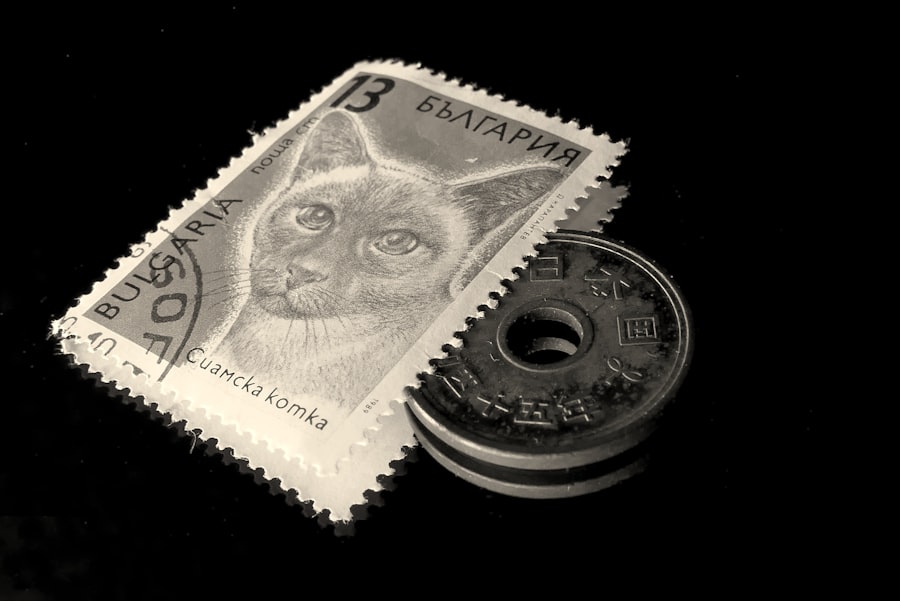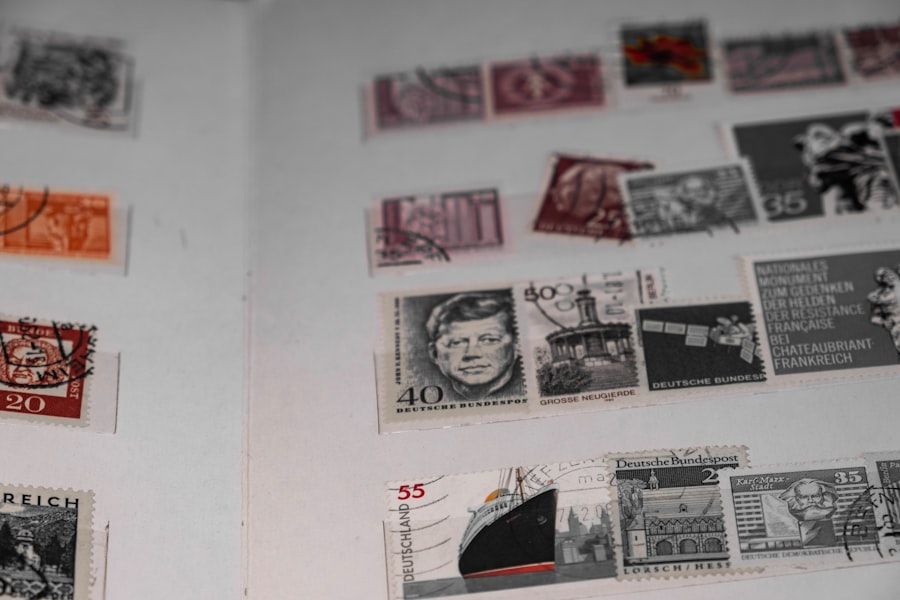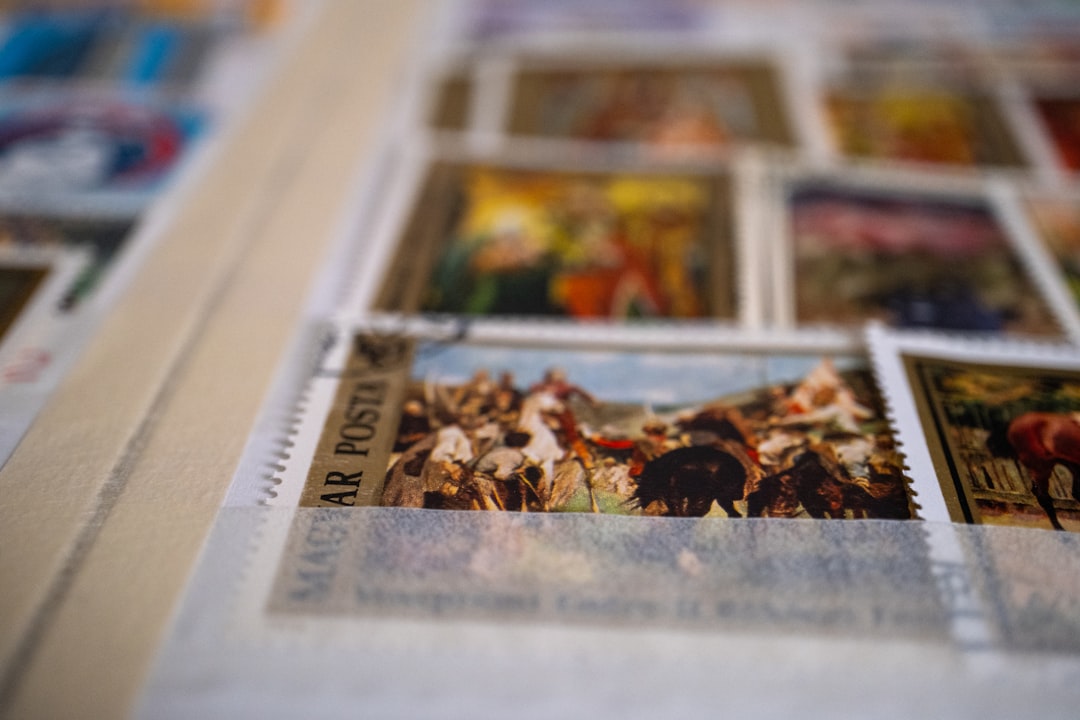Saddam Hussein stamps represent a unique intersection of philately and political history, capturing a moment in time that is both controversial and significant. Issued during the regime of the former Iraqi president, these stamps serve as tangible artifacts that reflect the political climate of Iraq from the late 20th century until the early 21st century. The stamps often feature imagery that glorifies Hussein’s leadership, national pride, and the cultural heritage of Iraq, making them not only collectibles but also historical documents that tell a story of a nation under a complex and often tumultuous rule.
The fascination with Saddam Hussein stamps extends beyond mere collection; they embody the narratives of power, propaganda, and identity. For collectors and historians alike, these stamps provide insight into the socio-political landscape of Iraq during Hussein’s reign. As such, they have become a subject of interest for those who study the interplay between art, politics, and society, offering a glimpse into how a government can use philately as a tool for nationalistic expression and propaganda.
Key Takeaways
- Saddam Hussein stamps offer a unique insight into the history and culture of Iraq during his regime.
- The historical significance of Saddam Hussein stamps lies in their portrayal of propaganda, nationalistic themes, and historical events.
- Due to their limited production and controversial nature, Saddam Hussein stamps are rare and highly sought after by collectors.
- The artistic and design elements of Saddam Hussein stamps reflect the regime’s propaganda and glorification of Saddam Hussein.
- Collecting Saddam Hussein stamps raises ethical considerations due to the controversial nature of his regime and actions.
Historical Significance of Saddam Hussein Stamps
The historical significance of Saddam Hussein stamps cannot be overstated. They emerged during a period marked by war, sanctions, and political upheaval in Iraq. The stamps often commemorate key events in Iraqi history, such as the Iran-Iraq War and the Gulf War, reflecting the regime’s narrative and its attempts to foster a sense of unity and resilience among the Iraqi people.
Each stamp serves as a snapshot of a specific moment in time, encapsulating the sentiments and ideologies that defined Hussein’s rule. Moreover, these stamps are emblematic of the broader historical context of the Middle East during the late 20th century. They provide a lens through which one can examine the impact of Hussein’s policies on Iraqi society and the international community.
The imagery and themes depicted on these stamps often align with Hussein’s propaganda efforts, showcasing his vision for Iraq and his attempts to position himself as a leader on the global stage. As such, they are not merely collectibles but rather artifacts that contribute to the understanding of a complex historical narrative.
Rarity and Collectibility of Saddam Hussein Stamps

The rarity of Saddam Hussein stamps adds to their allure among collectors. Many of these stamps were produced in limited quantities or were issued during specific political events, making them sought-after items in the philatelic community. The scarcity is further compounded by the tumultuous history of Iraq, which has led to significant changes in governance and societal structure.
As a result, many collectors view these stamps as not only valuable but also as pieces of history that are increasingly difficult to obtain. Collectors often find themselves drawn to the stories behind each stamp, which can enhance their value. For instance, certain stamps may have been issued to commemorate significant anniversaries or events that hold particular importance in Iraqi history.
The combination of rarity and historical context makes these stamps appealing not just for their aesthetic qualities but also for their potential investment value. As interest in Saddam Hussein memorabilia continues to grow, so too does the market for these unique philatelic items.
Artistic and Design Elements of Saddam Hussein Stamps
| Artistic and Design Elements of Saddam Hussein Stamps | |
|---|---|
| Color Scheme | Various colors including red, green, black, and gold |
| Images | Portraits of Saddam Hussein, Iraqi flags, and national symbols |
| Typography | Arabic calligraphy and decorative fonts |
| Themes | Historical events, achievements, and national pride |
| Materials | Paper or adhesive backing for postage |
The artistic and design elements of Saddam Hussein stamps are noteworthy for their bold imagery and symbolic representation. Many of these stamps feature portraits of Hussein himself, often depicted in a heroic light that emphasizes his role as a national leader. The use of vibrant colors and intricate designs reflects the cultural heritage of Iraq, incorporating motifs that resonate with national pride and identity.
In addition to portraits, many stamps include depictions of significant landmarks, historical events, or cultural symbols that are integral to Iraqi identity. These design choices are deliberate, aiming to evoke feelings of nostalgia and pride among the Iraqi populace.
The visual language employed in these stamps is a testament to how art can be harnessed for political purposes, transforming simple pieces of paper into instruments of propaganda that reinforce the regime’s narrative.
Political and Cultural Context of Saddam Hussein Stamps
The political and cultural context surrounding Saddam Hussein stamps is deeply intertwined with the history of Iraq itself. During Hussein’s rule, the government sought to cultivate a specific image of strength and resilience in the face of adversity. The stamps produced during this time reflect this narrative, often celebrating military victories or national achievements while downplaying the hardships faced by ordinary citizens due to war and sanctions.
This duality highlights how philately can serve as both a reflection of reality and a tool for shaping public perception. Culturally, these stamps also represent an effort to reclaim Iraqi identity amidst external pressures and conflicts. By featuring elements of Iraqi heritage—such as traditional dress, historical figures, or significant cultural sites—the stamps aim to foster a sense of unity among citizens.
This cultural representation is crucial in understanding how Hussein’s regime sought to maintain control over a diverse population by promoting a singular narrative that emphasized national pride and collective identity.
Investment Value of Saddam Hussein Stamps

The investment value of Saddam Hussein stamps has garnered attention from collectors and investors alike.
Some rare issues have seen significant appreciation over time, making them attractive options for those looking to diversify their investment portfolios.
The growing interest in Middle Eastern collectibles has further fueled demand for these unique items. Investors often consider the potential for future appreciation when acquiring Saddam Hussein stamps. As global interest in Middle Eastern history continues to rise, so too does the appeal of artifacts from this era.
Collectors who recognize the historical importance of these stamps may be willing to pay premium prices for particularly rare or well-preserved examples. This trend suggests that Saddam Hussein stamps could serve not only as collectibles but also as viable investment opportunities for those with an eye for emerging markets.
Global Interest in Saddam Hussein Stamps
The global interest in Saddam Hussein stamps reflects a broader fascination with political memorabilia and historical artifacts from contentious periods. Collectors from various countries have shown enthusiasm for acquiring these stamps, driven by curiosity about Iraq’s complex history and its impact on contemporary geopolitics. This international appeal underscores how philately can transcend borders, connecting individuals through shared interests in history and culture.
Moreover, exhibitions featuring Saddam Hussein stamps have attracted attention from both collectors and historians alike. These events provide opportunities for enthusiasts to engage with one another while deepening their understanding of Iraq’s past. The global interest in these stamps highlights how they serve as conversation starters about broader themes such as power dynamics, nationalism, and the role of art in political discourse.
Ethical Considerations of Collecting Saddam Hussein Stamps
Collecting Saddam Hussein stamps raises important ethical considerations that cannot be overlooked. For some individuals, acquiring memorabilia associated with a controversial figure like Hussein may evoke strong emotions or moral dilemmas. Questions arise regarding whether it is appropriate to collect items linked to a regime known for human rights abuses and oppression.
This ethical complexity challenges collectors to reflect on their motivations and the implications of their collecting practices. Furthermore, discussions surrounding the commodification of such artifacts often lead to debates about historical memory and representation. Collectors must navigate the fine line between preserving history and potentially glorifying figures associated with violence or oppression.
Engaging with these ethical considerations can enrich the collecting experience by prompting deeper reflections on how history is remembered and represented through objects like stamps.
Preserving the Legacy of Saddam Hussein through Stamps
Preserving the legacy of Saddam Hussein through stamps involves grappling with both historical significance and contemporary interpretations. While many view his regime as one marked by tyranny and conflict, others argue that understanding this period requires acknowledging its complexities. Stamps serve as tangible reminders of this legacy, encapsulating moments that shaped Iraq’s trajectory while also inviting critical reflection on the consequences of authoritarian rule.
In this context, preserving these stamps becomes an act of historical documentation rather than mere glorification. By collecting and studying these artifacts, individuals contribute to a more nuanced understanding of Iraq’s past—one that encompasses both its achievements and its struggles. This preservation effort can foster dialogue about how societies remember their leaders and how artifacts can shape collective memory.
Educational and Research Value of Saddam Hussein Stamps
The educational and research value of Saddam Hussein stamps is significant for scholars studying modern Middle Eastern history, political science, or art history. These stamps offer primary source material that can illuminate various aspects of Iraqi society during Hussein’s rule—from propaganda techniques to cultural expressions. Researchers can analyze how these artifacts reflect broader trends in governance, nationalism, and identity formation within Iraq.
Moreover, educators can utilize these stamps as teaching tools to engage students in discussions about political power dynamics and historical narratives. By examining the imagery and themes present in these stamps, students can gain insights into how governments use art and symbolism to shape public perception. This educational potential underscores the importance of preserving such artifacts for future generations who seek to understand complex historical contexts.
The Lasting Value of Saddam Hussein Stamps
In conclusion, Saddam Hussein stamps hold lasting value that extends beyond their aesthetic appeal or collectible status. They serve as poignant reminders of a tumultuous period in Iraqi history while offering insights into the interplay between politics, culture, and art. As artifacts that encapsulate both national pride and authoritarianism, these stamps invite critical reflection on how societies remember their pasts.
The ongoing interest in these stamps—whether from collectors, historians, or educators—demonstrates their significance as tools for understanding complex narratives within Iraq’s history. As discussions surrounding ethical considerations continue to evolve, so too does the potential for these artifacts to foster dialogue about memory, representation, and the role of art in shaping political discourse. Ultimately, Saddam Hussein stamps stand as enduring symbols that encapsulate both the triumphs and tribulations of a nation navigating its identity amidst profound challenges.
If you’re interested in the value of Saddam Hussein stamps, you might find it intriguing to explore related historical collectibles and their significance. An article that delves into various fascinating historical facts and collectibles can be found on the Hey Did You Know This website. For more insights, you can check out this related article that provides a broader context on unique historical items and their stories. This resource offers a deeper understanding of how such collectibles are valued and appreciated in the world of philately and beyond.
WATCH NOW! How the US Hunted and Captured Saddam Hussein: The Untold Story of Operation Red Dawn
FAQs
What are Saddam Hussein stamps?
Saddam Hussein stamps are postage stamps that were issued during the rule of Saddam Hussein in Iraq. These stamps feature images of Saddam Hussein, Iraqi landmarks, and other symbols associated with his regime.
What is the value of Saddam Hussein stamps?
The value of Saddam Hussein stamps can vary widely depending on factors such as rarity, condition, and demand from collectors. Some stamps may be worth only a few cents, while others can fetch hundreds or even thousands of dollars.
Where can I buy or sell Saddam Hussein stamps?
Saddam Hussein stamps can be bought and sold through various channels, including online auction sites, stamp dealers, and specialty stamp shows and conventions. It’s important to do thorough research and consult with experts to ensure the authenticity and value of the stamps.
Are Saddam Hussein stamps still valid for postage?
No, Saddam Hussein stamps are no longer valid for postage. They were issued during a specific period of time and are now considered obsolete for postal use.
Are Saddam Hussein stamps considered controversial or sensitive collectibles?
Yes, due to the political and historical significance of Saddam Hussein’s regime, some collectors and dealers may consider these stamps to be controversial or sensitive. It’s important to approach the collection and sale of these stamps with sensitivity and respect for the historical context.
